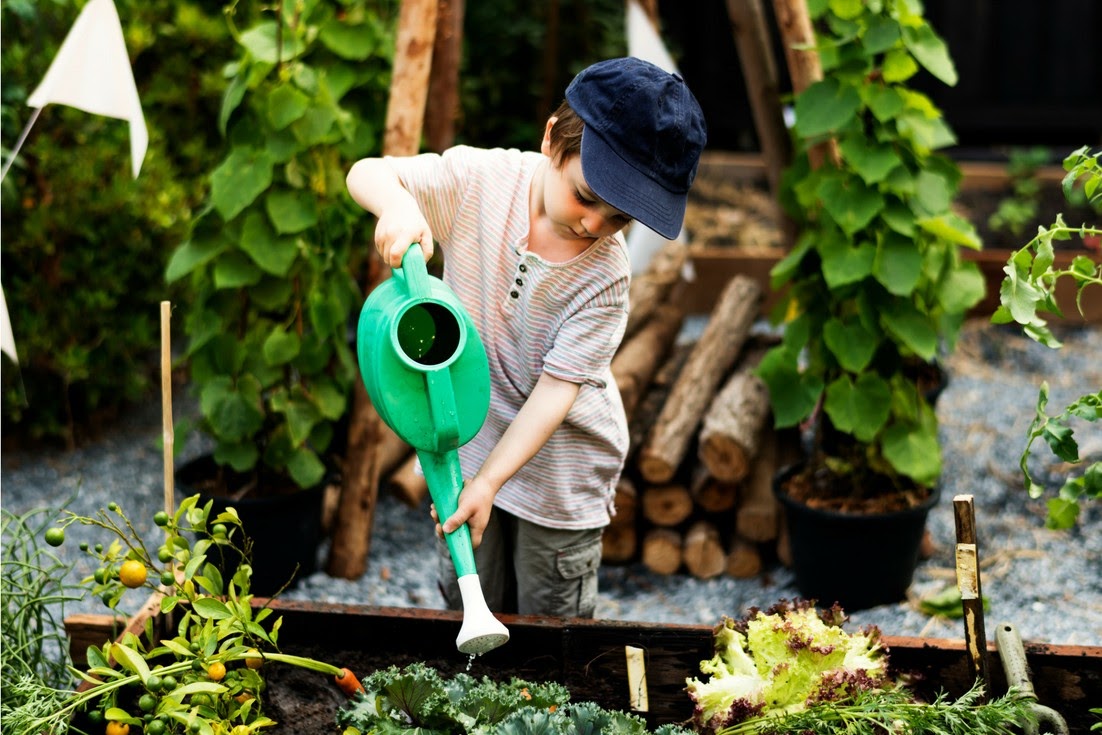 Planting a garden or starting some container plants can provide fresh veggies and beautiful flowers to your family or neighbors AND limit your environmental footprint while supporting local ecology
Planting a garden or starting some container plants can provide fresh veggies and beautiful flowers to your family or neighbors AND limit your environmental footprint while supporting local ecology
Store-bought fruits and vegetables have often traveled more than 1,500 miles before reaching the grocery store shelf. The cars and trucks transporting these products contribute to climate change and air pollution, and the big farms that grow most of the food we eat contribute to climate change, deforestation, pollution, soil degradation, and waste.
Pollinator gardens help support local plant-life and ecology by providing a meal or a home to pollinators like insects, birds, and bats. A pollinator carries pollen from plant to plant, allowing the native wildflowers and plants in our yards, gardens, and parks to reproduce. Pollination is an essential component of our ecological system. The human race and all of the earth's terrestrial (land-based) ecosystems would not survive without the pollination of 180,000 plant species around the world, including nearly 80% of all food plants (or crops).
Working with plants is a great way to enjoy the outdoors, to play in the dirt, to learn about food, and to practice caring for the earth. For this activity, feel free to create a new garden, help with an existing garden, or plant a container plant garden.
There is not just one way to plant or work in a garden, and many books, websites, and blogs are devoted to home gardening. Here are some steps to consider as you work in your garden:
-
Choose a good location
Plants need sunlight, nutritious soil, and water to thrive. If you are planting outdoors, research how much sunlight your plants need and find a good spot in your yard. If you are planting indoors, look for spots near windows for direct or indirect light. Consider buying a test kit to find out more about the nutrients in your soil.
-
Choose your seeds or starter plants
Do you want to grow a plant or plants from seed or purchase a starter or baby plant from a local nursery? Do you want to focus on native North Carolina plants or heirloom vegetable seeds? Why or why not? What plants do well when paired together? What plants have good side effects like helping to reduce mosquitoes in your yard?
If you want to focus on attracting pollinators, you'll need a range of different colors and plants, you'll want to focus on plants that are native to NC, and you'll want to choose plants that will bloom at different times to provide beauty year-round.
If you want to grow food for your family, think about what vegetables you most like to eat and research to find out preferred planting conditions and timing.
-
Make a plan
You may want to measure your space and draw it on a piece of paper. What plants do you want to put where? Remember to leave room for your feet - you may need to walk inside your garden to remove weeds or water the plants.
You may want to check out a virtual planner like this one from the Farmer's Almanac.
-
Get in the dirt!
Part of the fun of working in the garden is all of the dirt. Get started planting, watering, and caring for your plants. If you run into problems, ask a friend or family member, do some research online, or reach out to PEA.
More great resources on gardening:
Vegetable Gardens for Beginners
Starting a Vegetable Garden
Ways to Attract Pollinators
Gardening Tips for NC Extension
Native Plants in NC
Container Gardening
Don't forget to send us a photo of your garden or you working in your garden. Make sure to tag @peancorg and #PEAYoungLeaders to be entered into the weekly Young Eco Leaders Raffle.
CLICK HERE TO RETURN TO THE LIST OF ALL YOUNG ECO LEADERS ACTIVITIES